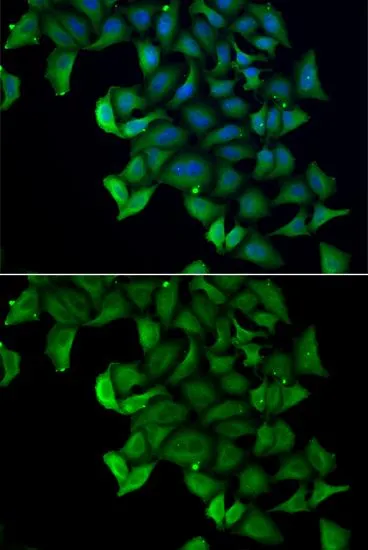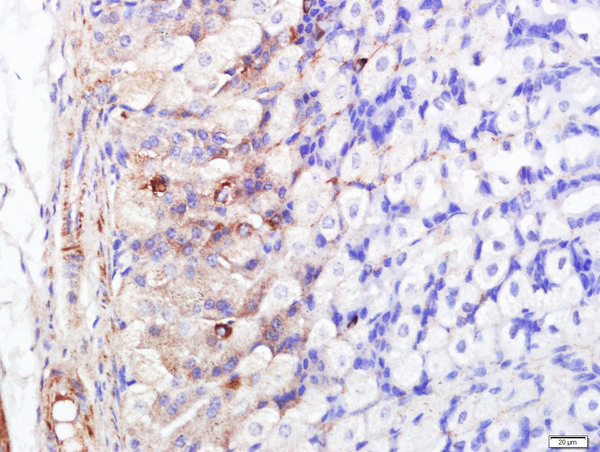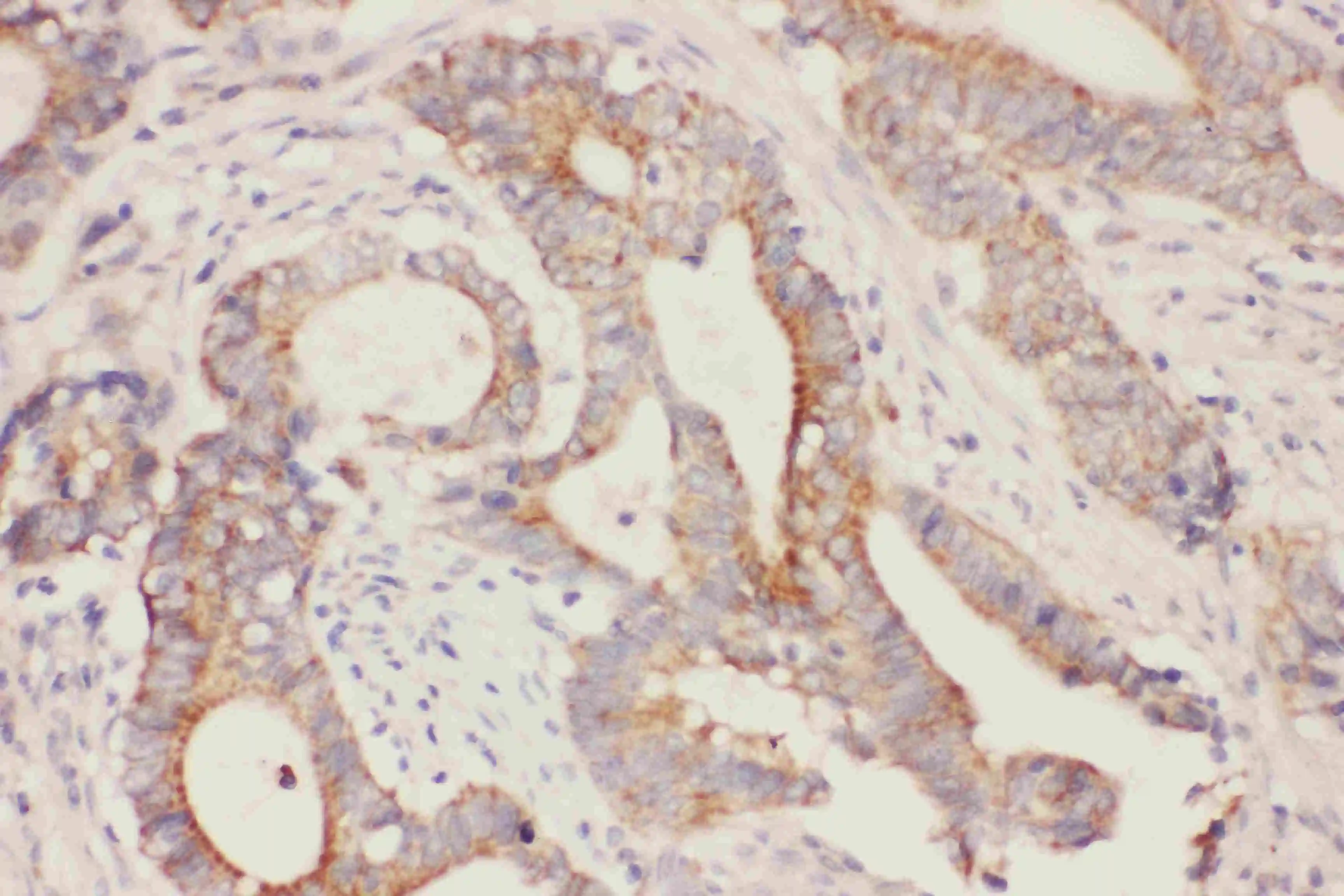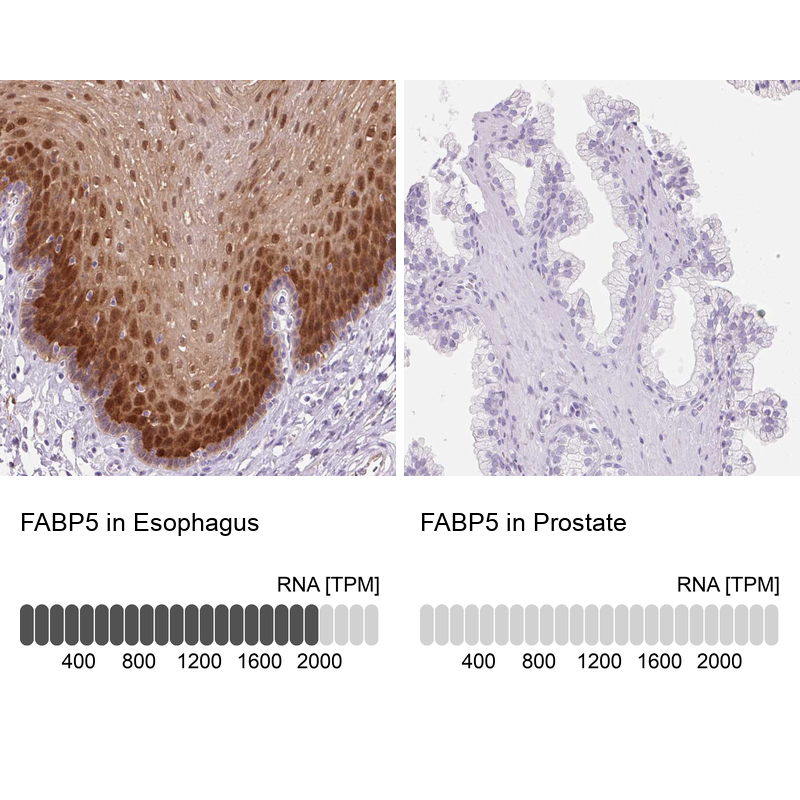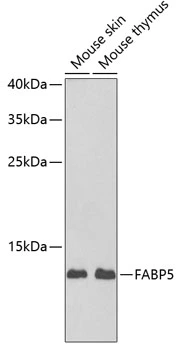
WB analysis of various sample lysates using GTX33191 FABP5 antibody. Dilution : 1:1000 Loading : 25microg per lane
FABP5 antibody
GTX33191
ApplicationsImmunoFluorescence, Western Blot, ImmunoCytoChemistry
Product group Antibodies
ReactivityHuman, Mouse
TargetFABP5
Overview
- SupplierGeneTex
- Product NameFABP5 antibody
- Delivery Days Customer9
- Application Supplier NoteWB: 1:500 - 1:2000. ICC/IF: 1:50 - 1:100. *Optimal dilutions/concentrations should be determined by the researcher.Not tested in other applications.
- ApplicationsImmunoFluorescence, Western Blot, ImmunoCytoChemistry
- CertificationResearch Use Only
- ClonalityPolyclonal
- ConjugateUnconjugated
- Gene ID2171
- Target nameFABP5
- Target descriptionfatty acid binding protein 5
- Target synonymsE-FABP, EFABP, KFABP, PA-FABP, PAFABP, fatty acid-binding protein 5, epidermal-type fatty acid-binding protein, fatty acid binding protein 5 (psoriasis-associated), psoriasis-associated fatty acid-binding protein homolog
- HostRabbit
- IsotypeIgG
- Protein IDQ01469
- Protein NameFatty acid-binding protein 5
- Scientific DescriptionThis gene encodes the fatty acid binding protein found in epidermal cells, and was first identified as being upregulated in psoriasis tissue. Fatty acid binding proteins are a family of small, highly conserved, cytoplasmic proteins that bind long-chain fatty acids and other hydrophobic ligands. FABPs may play roles in fatty acid uptake, transport, and metabolism. Polymorphisms in this gene are associated with type 2 diabetes. The human genome contains many pseudogenes similar to this locus.[provided by RefSeq, Feb 2011]
- ReactivityHuman, Mouse
- Storage Instruction-20°C or -80°C,2°C to 8°C
- UNSPSC12352203

